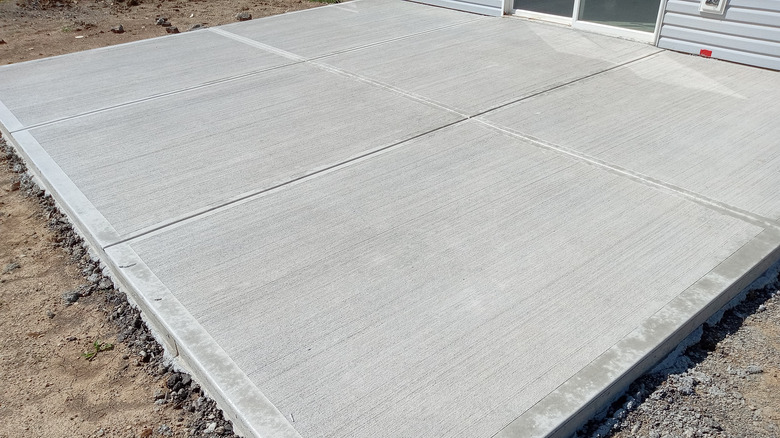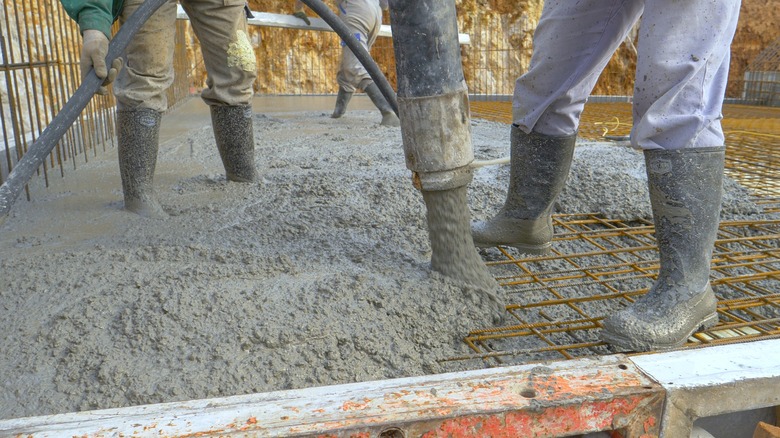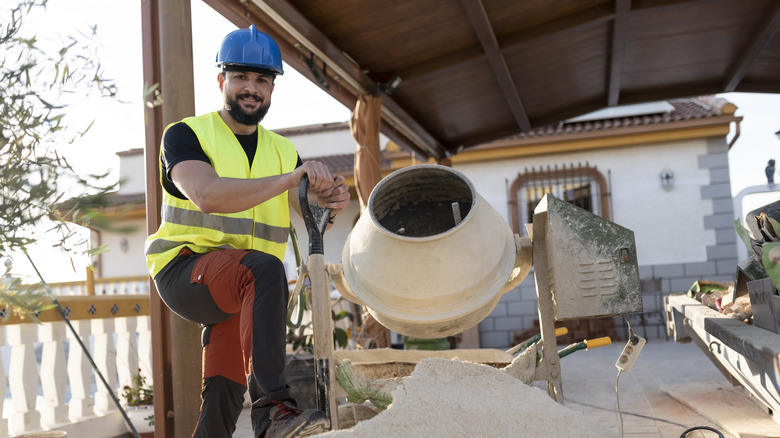Dry Pour Versus Wet Pour Concrete: Which Is Better For Your New Patio?
If you are preparing to build your own concrete patio, you will need to make the tough decision of selecting either wet pour or dry pour concrete. You might assume that the two materials are interchangeable, but there are a few key differences that you should take into consideration. Jason Pietruszka, Real Estate Developer and Founder of JJP Construction, spoke exclusively to House Digest about which option would be best for your new patio depending on your needs. He revealed that dry pour is typically better for beginners, but wet pour is faster and often yields sturdier results.
However, before using Pietruszka's guidance to determine which type of concrete is ideal for you, it's good to get a clear understanding of their basic differences. "Dry pour is when you take the dry materials of concrete and lay it into your form and lightly water the material every few minutes or so to make the aggregate saturated with water so that it firms up and becomes concrete," he explained. "A wet pour is when the aggregate is already mixed with water and then poured into a form." The following information should help you feel well-prepared for any DIY concrete patio project.
The benefits of dry pour versus wet pour concrete
Pietruszka shared more details on the different benefits of wet pour and dry pour concrete. "If you are a DIYer and don't have a lot of concrete skills, a dry pour might be better because you'll have time to fix or adjust any mistake you might make," he explained while speaking exclusively to House Digest. While dry pour concrete provides those perks, Pietruszka admitted that he prefers wet pour concrete. "It is quicker and more accurate with the ratios of aggregate and water," he shared. "Which usually means it will be stronger!"
Although dry pour concrete is the more beginner-friendly option, you might decide that it is worth it to take the time to learn how to use wet pour concrete or hire a professional to apply it properly since it will typically create a stronger patio. Wet pour concrete is likely the safer choice for those seeking durability when it comes to their DIY patio project idea.
Precautions to take when using either type of concrete
Regardless of whether you decide to use dry pour or wet pour concrete, there are precautions you will need to take to avoid mistakes when designing your new patio. Pietruszka revealed that he actually believes dry pour concrete is a bit riskier, so you will need to be extra careful when using this material. "If it is not done correctly, it can easily break. So make sure you watch a few DIY videos," the expert explained while speaking exclusively to House Digest.
He went on to share some advice for how to use wet pour concrete the right way. There are risks associated with using this material improperly, too. "If you are planning to try a wet pour as a DIYer, make sure you read the instructions for the mixtures and stay present when the concrete is drying so that you can make any adjustments needed," Pietruszka explained. The last piece of advice the expert shared is to have a professional handle your project if needed, but he also does "encourage the DIYers to get out there and try!"


